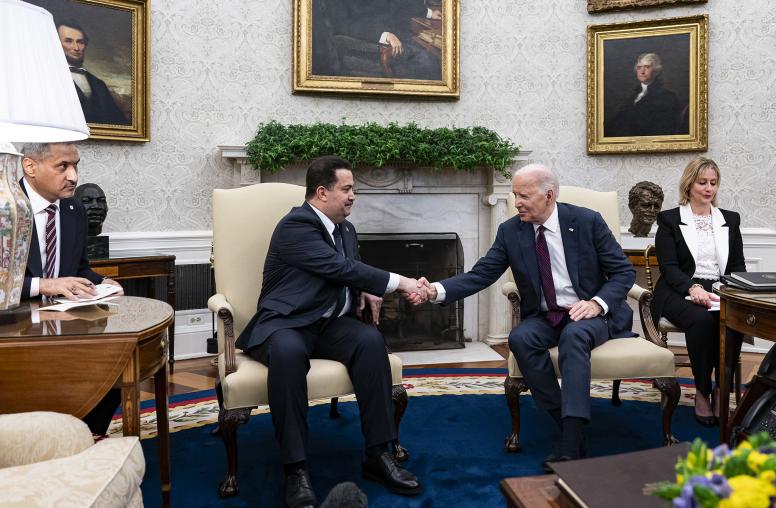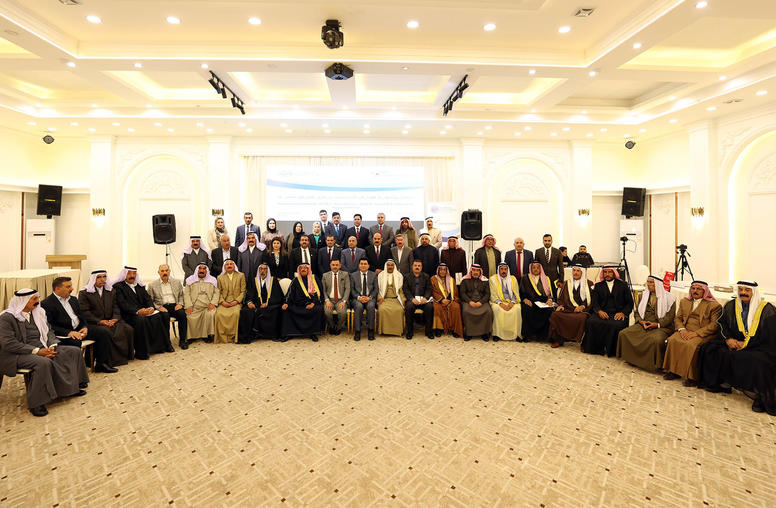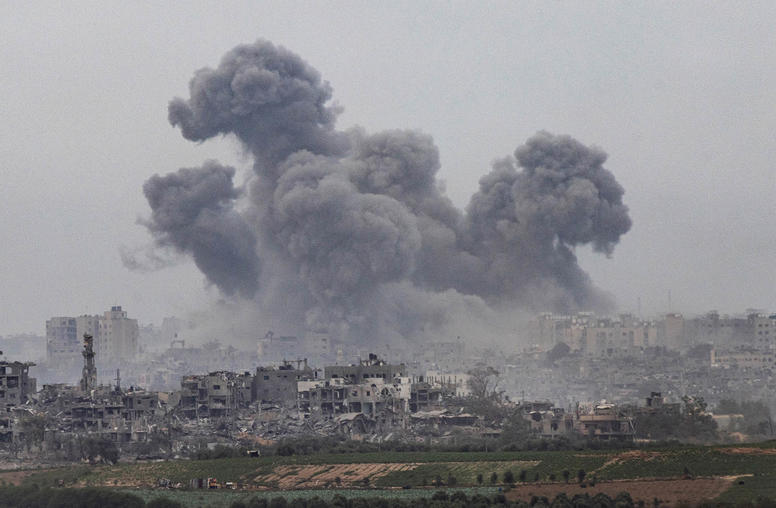Oral Histories: Iraq Provincial Reconstruction Teams (2008-2009)
The Oral Histories Project on Stability Operations
The Iraq PRT program has highlighted the challenges that the U.S. government faces in conducting operations in conflicted environments. The Iraq PRT Project collected insights and lessons learned from government, military, and non-governmental officials. Interviews were conducted by the Association for Diplomatic Studies and Training under a contract with the Institute of Peace.
The Oral Histories Project on Stability Operations collects the full text of interviews with individuals involved in stability operations, to draw lessons learned and address the challenges of post-conflict intervention.
The Provincial Reconstruction Team (PRT) model was brought to Iraq in November 2005. PRTs are small civilian-military units that assist provincial and local governments in Iraq to govern effectively and deliver essential services. PRTs in Iraq are largely civilian-led and differ in staffing and organization from PRTs in Afghanistan. In 2007, President Bush announced the addition of 10 new PRTs that would be embedded in Brigade Combat Teams to bolster moderates and build capacity of local officials. As of February 2009, there were 28 PRTs operating throughout Iraq, including 10 embedded with military units.
U.S. Government Officials | Military Officers | International Organizations & NGOs | Related Resources
U.S. Government Officials
- Interview #2: Interviewed 02/14/08 (200KB PDF)
- Interview #3: Interviewed 02/21/08 (212KB PDF)
- Interview #5: Interviewed 03/12/08 (188KB PDF)
- Interview #6: Interviewed 03/13/08 (164KB PDF)
- Interview #7: Interviewed 04/15/08 (176KB PDF)
- Interview #8: Interviewed 02/20/08 (200KB PDF)
- Interview #9: Interviewed 03/26/08 (216KB PDF)
- Interview #10: Interviewed 03/03/08 (336KB PDF)
- Interview #12: Interviewed 04/21/08 (308KB PDF)
- Interview #13: Interviewed 04/18/08 (248KB PDF)
- Interview #14: Interviewed 02/21/08 (244KB PDF)
- Interview #17: Interviewed 02/15/08 (204KB PDF)
- Interview #18: Interviewed 04/20/08 (184KB PDF)
- Interview #19: Interviewed 03/13/08 (188KB PDF)
- Interview #20: Interviewed 04/24/08 (504KB PDF)
- Interview #21: Interviewed 04/29/08 (368KB PDF)
- Interview #22: Interviewed 02/20/08 (340KB PDF)
- Interview #23: Interviewed 05/21/08 (264KB PDF)
- Interview #25: Interviewed 05/01/08 (412KB PDF)
- Interview #26: Interviewed 05/15/08 (416KB PDF)
- Interview #27: Interviewed 03/06/08 (448KB PDF)
- Interview #34: Interviewed 08/07/08 (204KB PDF)
- Interview #35: Interviewed 05/09/08 (332KB PDF)
- Interview #36: Interviewed 07/15/08 (336KB PDF)
- Interview #37: Interviewed 06/26/08 (276KB PDF)
- Interview #38: Interviewed 06/18/08 (264KB PDF)
- Interview #39: Interviewed 02/14/08 (212KB PDF)
- Interview #41: Interviewed 03/25/08 (388KB PDF)
- Interview #43: Interviewed 08/08/08 (300KB PDF)
- Interview #46: Interviewed 08/19/08 (320KB PDF)
- Interview #49: Interviewed 05/30/08 (468KB PDF)
- Interview #50: Interviewed 08/04/08 (332KB PDF)
- Interview #53: Interviewed 08/17/08 (284KB PDF)
- Interview #54: Interviewed 09/23/08 (344KB PDF)
- Interview #55: Interviewed 08/06/08 (200KB PDF)
- Interview #57: Interviewed 08/15/08 (228KB PDF)
- Interview #58: Interviewed 09/25/08 (240KB PDF)
- Interview #59: Interviewed 10/08/08 (184KB PDF)
- Interview #60: Interviewed 10/10/08 (248KB PDF)
- Interview #61: Interviewed 10/29/08 (192KB PDF)
- Interview #62: Interviewed 09/03/08 (208KB PDF)
- Interview #63: Interviewed 09/21/08 (200KB PDF)
- Interview #64: Interviewed 10/07/08 (156KB PDF)
- Interview #66: Interviewed 12/12/08 (148KB PDF)
- Interview #67: Interviewed 12/09/08 (196KB PDF)
- Interview #68: Interviewed 12/09/08 (320KB PDF)
- Interview #69: Interviewed 08/25/08 (180KB PDF)
- Interview #70: Interviewed 09/26/08 (204KB PDF)
- Interview #72: Interviewed 01/02/09 (312KB PDF)
- Interview #73: Interviewed 01/12/09 (352KB PDF)
Military Officers
- Interview #1: Interviewed 02/08/08 (216KB PDF)
- Interview #11: Interviewed 03/11/08 (244KB PDF)
- Interview #15: Interviewed 04/14/08 (184KB PDF)
- Interview #16: Interviewed 03/27/08 (244KB PDF)
- Interview #24: Interviewed 03/26/08 (288KB PDF)
- Interview #28: Interviewed 03/29/08 (376KB PDF)
- Interview #29: Interviewed 04/03/08 (372KB PDF)
- Interview #45: Interviewed 09/24/08 (368KB PDF)
- Interview #48: Interviewed 09/23/08 (268KB PDF)
- Interview #51: Interviewed 08/20/08 (220KB PDF)
- Interview #52: Interviewed 09/24/08 (364KB PDF)
- Interview #56: Interviewed 08/28/08 (216KB PDF)
International Organizations and NGOs
- Interview #4: Interviewed 04/04/08 (192KB PDF)
- Interview #65: Interviewed 11/06/08 (248KB PDF)
- Interview #71: Interviewed 11/10/08 (444KB PDF)
Related Resources
- Provincial Reconstruction Teams in Iraq : Special Report, March 2007
- Evaluating Iraq's Provincial Reconstruction Teams While Drawdown Looms: A USIP Trip Report : USIPeace Briefing, December 2008



